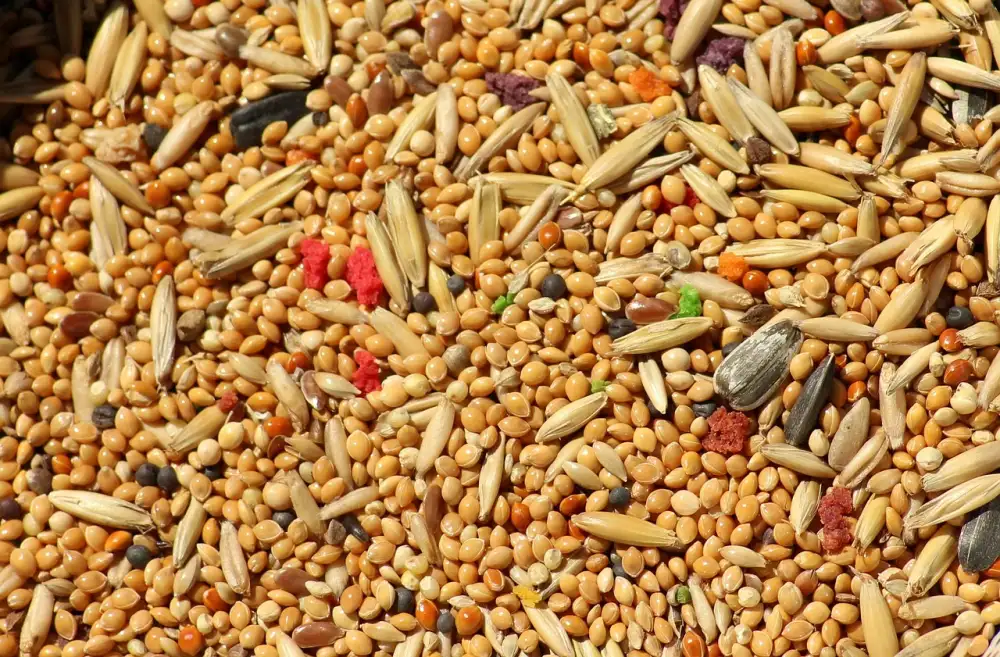Master the Art of Cooking Millet: Your Ultimate Guide to Perfectly Cooked Millet

- Step-by-Step Guide on Cooking Millet
- 1. Measure the Millet and Rinse
- 2. Toast the Millet for Enhanced Flavor
- 3. Add Water and Bring to a Boil
- 4. Reduce Heat and Simmer
- 5. Fluff and Rest
- Tips for Perfectly Cooked Millet
- 1. Proper Water-to-Millet Ratio
- 2. Adjusting Cooking Time for Desired Texture
- 3. Adding Flavor with Herbs and Spices
- Millet Serving Suggestions and Recipe Ideas
- 1. Millet as a Side Dish
- 2. Millet in Salads and Grain Bowls
- 3. Millet in Breakfast Recipes
Millet is a nutritious and versatile grain that has been consumed for thousands of years. It is a staple in many cultures around the world and is known for its numerous health benefits. Millet is naturally gluten-free, making it an excellent choice for those with dietary restrictions. It is also rich in fiber, protein, vitamins, and minerals, making it a great addition to a balanced diet. With its mild flavor and fluffy texture, millet can be used in a variety of dishes, from savory to sweet. Whether you're looking to incorporate more whole grains into your diet or simply want to try something new, millet is a fantastic option to explore in your culinary adventures.
Step-by-Step Guide on Cooking Millet
1. Measure the Millet and Rinse: Start by measuring the desired amount of millet and rinse it under cold water to remove any impurities.
2. Toast the Millet for Enhanced Flavor: In a dry skillet, toast the rinsed millet over medium heat for a few minutes until it becomes fragrant and golden brown.
3. Add Water and Bring to a Boil: Transfer the toasted millet to a saucepan and add the appropriate amount of water (usually 2 cups of water for every 1 cup of millet). Bring it to a boil over high heat.
4. Reduce Heat and Simmer: Once boiling, reduce the heat to low and cover the saucepan with a lid. Allow the millet to simmer for about 15-20 minutes or until all the water is absorbed.
5. Fluff and Rest: Remove the saucepan from heat and let it sit covered for 5 minutes. Then, use a fork to fluff up the cooked millet, separating any clumps.
By following these simple steps, you will be able to cook millet perfectly every time.
1. Measure the Millet and Rinse
To start cooking millet, measure out the desired amount of millet grains using a measuring cup. A general rule of thumb is to use 1 cup of millet for every 2 cups of water. After measuring, rinse the millet under cold water to remove any dust or debris. This step helps to ensure that your cooked millet has a clean and fresh taste. Once rinsed, you are ready to move on to the next step in cooking perfect millet.
2. Toast the Millet for Enhanced Flavor
Toasting the millet before cooking enhances its flavor and adds a nutty aroma. Start by heating a dry skillet over medium heat. Add the millet and toast it for about 3-4 minutes, stirring constantly. You'll notice the grains turning golden brown and emitting a pleasant fragrance. Be careful not to burn them! Once toasted, remove the millet from the skillet and proceed with the cooking process. The toasting step will elevate the taste of your millet dishes to a whole new level.
3. Add Water and Bring to a Boil
2.3. Add Water and Bring to a Boil:
Once the millet is toasted, it's time to add water. For every cup of millet, you'll need two cups of water. Pour the water into the pot with the millet and bring it to a boil over medium-high heat. Stir occasionally to prevent sticking. Boiling the millet will help soften it and cook it evenly. Keep an eye on the pot as it comes to a boil, and be ready to reduce the heat once it reaches boiling point.
4. Reduce Heat and Simmer
Once the water comes to a boil, reduce the heat to low and cover the pot with a lid. Allow the millet to simmer gently for about 15-20 minutes. Keep an eye on it and stir occasionally to prevent sticking. The millet is done when all the water has been absorbed and the grains are tender but still slightly chewy. If there is any excess liquid, simply drain it off. Fluff the cooked millet with a fork and let it rest for a few minutes before serving. This step will help to ensure that the grains separate easily and have a light, fluffy texture.
5. Fluff and Rest
Once the millet is cooked and the water has been absorbed, it's important to fluff it with a fork. This will help separate the grains and prevent them from clumping together. Fluffing also helps to release any excess moisture, resulting in light and fluffy millet. After fluffing, cover the pot with a lid and let the millet rest for about 5 minutes. This resting period allows the grains to fully absorb any remaining moisture and ensures that they are evenly cooked. So don't skip this step - fluff and rest your millet for perfect results every time!
Tips for Perfectly Cooked Millet
1. Proper Water-to-Millet Ratio: Use a 2:1 ratio of water to millet for fluffy and tender results.
2. Adjusting Cooking Time for Desired Texture: For a softer texture, cook millet for 20-25 minutes; for a chewier texture, cook for 25-30 minutes.
3. Adding Flavor with Herbs and Spices: Enhance the taste of millet by adding herbs like thyme or spices like cumin during cooking. Experiment with different flavors to suit your preferences.
1. Proper Water-to-Millet Ratio
3.1. Proper Water-to-Millet Ratio
To achieve perfectly cooked millet, it is crucial to maintain the right water-to-millet ratio. Typically, a 2:1 ratio of water to millet works well. For every cup of millet, use two cups of water. This ensures that the grains cook evenly and absorb the necessary moisture without becoming mushy or dry. Remember to adjust the quantity accordingly if you are cooking a larger or smaller batch of millet. By following this simple guideline, you will be able to achieve fluffy and tender millet every time you cook it.
2. Adjusting Cooking Time for Desired Texture
Adjusting the cooking time is crucial for achieving the desired texture of millet. If you prefer a softer texture, cook it for a longer time, around 20-25 minutes. For a chewier texture, reduce the cooking time to 15-18 minutes. Keep in mind that the millet will continue to absorb moisture as it rests, so slightly undercooking it can prevent it from becoming mushy. Experiment with different cooking times to find your perfect millet consistency.
3. Adding Flavor with Herbs and Spices
Adding Flavor with Herbs and Spices:
To elevate the taste of your cooked millet, don't be afraid to experiment with herbs and spices. A sprinkle of dried herbs like thyme, rosemary, or oregano can add a savory note to your dish. For a touch of warmth, try adding ground spices like cumin, turmeric, or paprika. Fresh herbs like parsley, cilantro, or basil can also bring a burst of freshness to your millet. Don't hesitate to get creative and mix different flavors together to find your perfect combination. By infusing your millet with these aromatic additions, you'll take it from plain grain to a flavorful delight that will leave everyone asking for seconds.
Millet Serving Suggestions and Recipe Ideas
4. Millet Serving Suggestions and Recipe Ideas
Millet is a versatile grain that can be enjoyed in various ways. Here are some serving suggestions and recipe ideas to inspire you:
4.1. Millet as a Side Dish: Cooked millet makes a delicious and nutritious side dish for any meal. Serve it alongside roasted vegetables, grilled chicken, or fish for a wholesome and satisfying meal.
4.2. Millet in Salads and Grain Bowls: Add cooked millet to your favorite salad or grain bowl for an extra boost of texture and flavor. It pairs well with fresh vegetables, leafy greens, and a tangy vinaigrette dressing.
4.3. Millet in Breakfast Recipes: Start your day off right by incorporating millet into your breakfast routine. Use it as a base for a warm porridge topped with fruits, nuts, and honey or add it to muffins or pancakes for added nutrition.
Get creative with millet and experiment with different flavors and ingredients to create your own unique dishes. Embrace the versatility of this nutritious grain and enjoy its health benefits in every bite!
1. Millet as a Side Dish
Millet is a fantastic grain to incorporate into your meals as a side dish. Its mild, nutty flavor pairs well with a variety of dishes, making it a versatile option for any cuisine. Simply cook the millet using the step-by-step guide mentioned earlier, and you'll have a delicious and nutritious side dish ready in no time. Serve it alongside roasted vegetables, grilled chicken, or even stir-fried tofu for a complete and satisfying meal. The fluffy texture of cooked millet adds a delightful contrast to any main course, making it an excellent choice to enhance your dining experience.
2. Millet in Salads and Grain Bowls
Millet is a versatile grain that can add a nutritious and satisfying element to salads and grain bowls. Its light, fluffy texture and mild flavor make it the perfect base for these dishes. To incorporate millet into your salads, simply cook it according to the step-by-step guide mentioned earlier. Once cooked, let it cool before adding it to your salad ingredients. You can mix it with fresh vegetables, herbs, and a tangy dressing for a refreshing and wholesome meal. In grain bowls, millet can be combined with roasted vegetables, protein sources like grilled chicken or tofu, and a flavorful sauce or dressing. The possibilities are endless when it comes to incorporating millet into salads and grain bowls – get creative and enjoy the delicious results!
3. Millet in Breakfast Recipes
Millet is not only a great option for lunch and dinner, but it can also be incorporated into your breakfast routine. Start your day with a nutritious and filling meal by adding cooked millet to your favorite breakfast recipes.
One simple way to enjoy millet for breakfast is by using it as a base for a warm porridge. Cook the millet according to the instructions mentioned earlier, but instead of reducing the heat and simmering, continue cooking until the grains are soft and creamy. Add your choice of sweeteners such as honey or maple syrup, along with some fruits, nuts, or seeds for added texture and flavor.
Another delicious option is to use cooked millet in pancakes or waffles. Simply substitute a portion of the flour in your pancake or waffle batter with cooked millet. The millet adds a slightly nutty taste and provides extra fiber and nutrients to your breakfast.
You can also make a hearty breakfast bowl by combining cooked millet with yogurt or milk, fresh fruits, and a drizzle of honey or agave syrup. Top it off with some crunchy granola or chopped nuts for an extra crunch.
By incorporating millet into your breakfast recipes, you not only add variety to your morning meals but also boost their nutritional value. So start experimenting with different ways to include this versatile grain in your breakfast routine and enjoy its health benefits throughout the day!
In conclusion, millet is a truly remarkable grain that deserves a place in your kitchen. Not only is it highly nutritious, packed with vitamins and minerals, but it is also incredibly versatile and easy to cook. By following the step-by-step guide and tips provided, you can master the art of cooking millet and enjoy its delicious flavor and unique texture. So go ahead, embrace millet as a healthy and delicious ingredient in your culinary creations. Your taste buds and body will thank you!
Published: 07. 12. 2023
Category: Food



